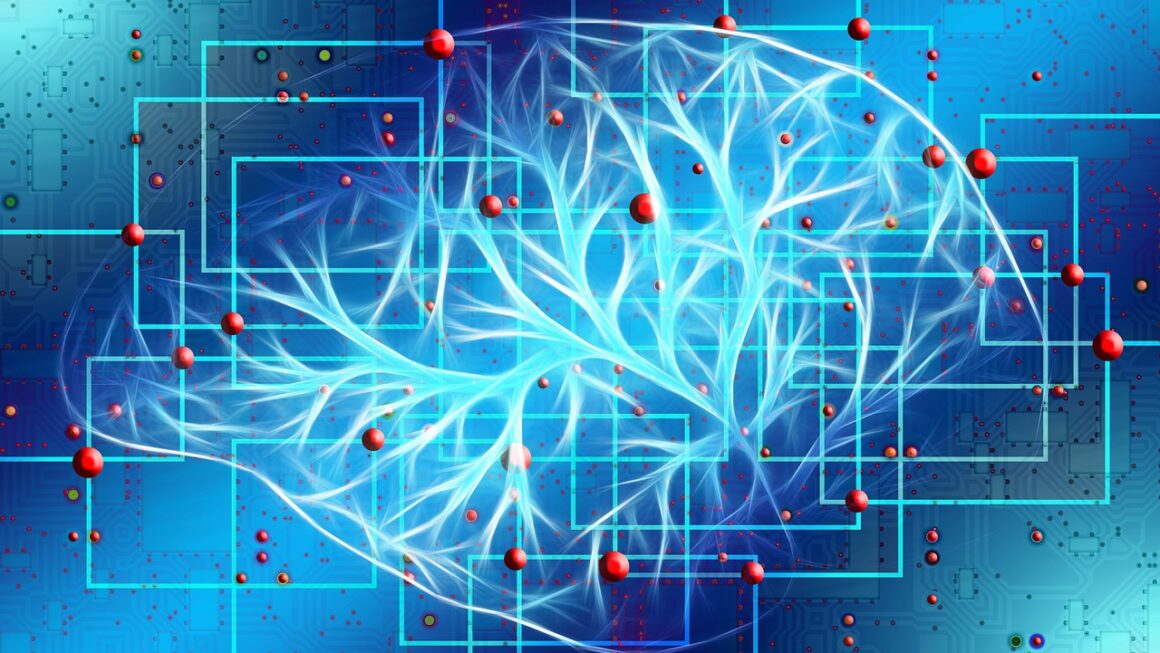Neural networks, inspired by the intricate web of neurons in the human brain, have revolutionized the field of artificial intelligence. They’re at the heart of many technologies we use daily, from voice assistants and image recognition to personalized recommendations and self-driving cars. This blog post will delve deep into the world of neural networks, exploring their inner workings, architectures, applications, and the future they hold.
What are Neural Networks?
Neural networks, also known as artificial neural networks (ANNs), are a set of algorithms designed to recognize patterns. They interpret sensory data through a type of machine perception, labeling or clustering raw input. The patterns they recognize are numerical, contained in vectors, into which all real-world data, be it images, sound, text or time series, must be translated.
The Basic Building Blocks: Neurons
- Neurons (Nodes): The fundamental unit of a neural network. Each neuron receives input, processes it, and produces an output.
- Weights: Each input to a neuron has an associated weight, representing its importance. These weights are adjusted during the learning process. Imagine trying to decide whether to go outside. The “weather is sunny” input might have a higher weight than the “I feel tired” input.
- Bias: A bias term is added to the weighted sum of inputs. It allows the neuron to activate even when all inputs are zero. Think of it as a threshold the weighted sum needs to cross.
- Activation Function: Applies a non-linear transformation to the weighted sum of inputs and bias. Common activation functions include sigmoid, ReLU (Rectified Linear Unit), and tanh. This non-linearity is crucial for the network to learn complex patterns. Without it, the entire network would behave like a single linear regression model. ReLU, in particular, is popular because it helps to prevent the vanishing gradient problem during training.
How Neural Networks Learn
Neural networks learn through a process called training, where they are exposed to a large dataset of labeled examples.
- Forward Propagation: Input data is fed forward through the network, layer by layer, until an output is produced.
- Loss Function: Compares the network’s output to the actual target output. The loss function quantifies the error. Common loss functions include mean squared error (MSE) for regression problems and cross-entropy loss for classification problems.
- Backpropagation: The error signal is propagated backward through the network, and the weights and biases are adjusted to minimize the loss function. This adjustment is guided by optimization algorithms like gradient descent. The learning rate controls how much the weights are adjusted in each step.
- Optimization: Algorithms like Stochastic Gradient Descent (SGD), Adam, and RMSprop are used to efficiently update the weights and biases. Adam, in particular, is often favored for its adaptive learning rate.
- Epochs: One complete pass through the entire training dataset. Training often involves multiple epochs to allow the network to refine its weights and biases.
- Overfitting and Regularization: A common challenge is overfitting, where the network performs well on the training data but poorly on unseen data. Regularization techniques, such as L1 and L2 regularization, dropout, and early stopping, are used to prevent overfitting. Dropout randomly deactivates neurons during training, forcing the network to learn more robust features.
Neural Network Architectures
Different network architectures are suited for different types of problems.
Feedforward Neural Networks (FNNs)
- The simplest type of neural network, where data flows in one direction, from input to output.
- Suitable for basic classification and regression tasks.
- Example: Predicting house prices based on features like size, location, and number of bedrooms.
Convolutional Neural Networks (CNNs)
- Specifically designed for processing image and video data.
- Utilize convolutional layers to extract features from images.
- Key components: convolutional layers, pooling layers, and fully connected layers. Convolutional layers apply filters to the input image, detecting features like edges and corners. Pooling layers reduce the spatial dimensions of the feature maps, reducing the number of parameters and computational complexity.
- Example: Image recognition, object detection, and image segmentation. CNNs are used in facial recognition software, self-driving cars, and medical image analysis.
- Data Augmentation: Techniques like rotation, scaling, and cropping are used to artificially increase the size of the training dataset and improve the robustness of CNNs.
Recurrent Neural Networks (RNNs)
- Designed for processing sequential data, such as text, audio, and time series.
- Have recurrent connections that allow them to maintain a memory of previous inputs.
- Variants include LSTMs (Long Short-Term Memory) and GRUs (Gated Recurrent Units), which address the vanishing gradient problem. LSTMs use gates to control the flow of information through the network, allowing them to learn long-term dependencies.
- Example: Natural language processing (NLP), machine translation, and speech recognition. They’re used in chatbots, sentiment analysis, and time series forecasting.
Generative Adversarial Networks (GANs)
- Consist of two neural networks, a generator and a discriminator, that compete against each other.
- The generator creates synthetic data, while the discriminator tries to distinguish between real and fake data.
- Used for image generation, style transfer, and data augmentation.
- Example: Generating realistic images of faces, creating artwork in a specific style, and synthesizing new training data.
Applications of Neural Networks
Neural networks are being applied in a wide range of industries.
Healthcare
- Disease Diagnosis: Analyzing medical images (X-rays, MRIs, CT scans) to detect diseases like cancer. For example, neural networks can analyze mammograms with higher accuracy than human radiologists in some cases.
- Drug Discovery: Identifying potential drug candidates and predicting their efficacy.
- Personalized Medicine: Developing customized treatment plans based on individual patient data.
Finance
- Fraud Detection: Identifying fraudulent transactions in real-time.
- Algorithmic Trading: Developing automated trading strategies.
- Risk Management: Assessing credit risk and predicting market volatility.
Retail
- Personalized Recommendations: Suggesting products and services based on customer preferences.
- Demand Forecasting: Predicting future demand for products.
- Inventory Management: Optimizing inventory levels to minimize costs.
Transportation
- Self-Driving Cars: Enabling autonomous navigation.
- Traffic Optimization: Improving traffic flow and reducing congestion.
- Predictive Maintenance: Predicting when vehicles need maintenance.
Challenges and Future Directions
While neural networks have achieved remarkable success, there are still challenges to overcome.
Explainability and Interpretability
- Neural networks are often considered “black boxes” because it can be difficult to understand how they arrive at their decisions.
- Research is being conducted to develop methods for explaining and interpreting neural network behavior. Techniques like SHAP (SHapley Additive exPlanations) and LIME (Local Interpretable Model-agnostic Explanations) are used to understand the importance of different features in the model’s predictions.
- This is crucial for building trust and ensuring that neural networks are used responsibly, especially in sensitive applications like healthcare and finance.
Data Dependency
- Neural networks typically require large amounts of labeled data to train effectively.
- Research is being conducted to develop methods for training neural networks with limited data. Techniques like transfer learning, where a model trained on one task is fine-tuned for another, can significantly reduce the amount of data required.
- This is particularly important in domains where data is scarce or expensive to obtain.
Computational Cost
- Training large neural networks can be computationally expensive, requiring specialized hardware like GPUs.
- Research is being conducted to develop more efficient neural network architectures and training algorithms. Techniques like model compression and quantization can reduce the size and computational requirements of neural networks, making them easier to deploy on resource-constrained devices.
- This will enable the deployment of neural networks on edge devices, such as smartphones and embedded systems.
The Future of Neural Networks
- Neuromorphic Computing: Developing hardware that mimics the structure and function of the human brain.
- Quantum Computing: Using quantum computers to train and run neural networks.
- Artificial General Intelligence (AGI): Developing AI systems that can perform any intellectual task that a human being can.
Conclusion
Neural networks are a powerful tool for solving complex problems across a wide range of industries. As research continues and new architectures and training techniques are developed, neural networks are poised to play an even greater role in shaping the future of artificial intelligence and transforming the world around us. Understanding the fundamentals of neural networks, their various architectures, and their applications is crucial for anyone seeking to leverage the power of AI in their respective fields. The journey of neural networks is just beginning, and the potential for innovation is immense.




